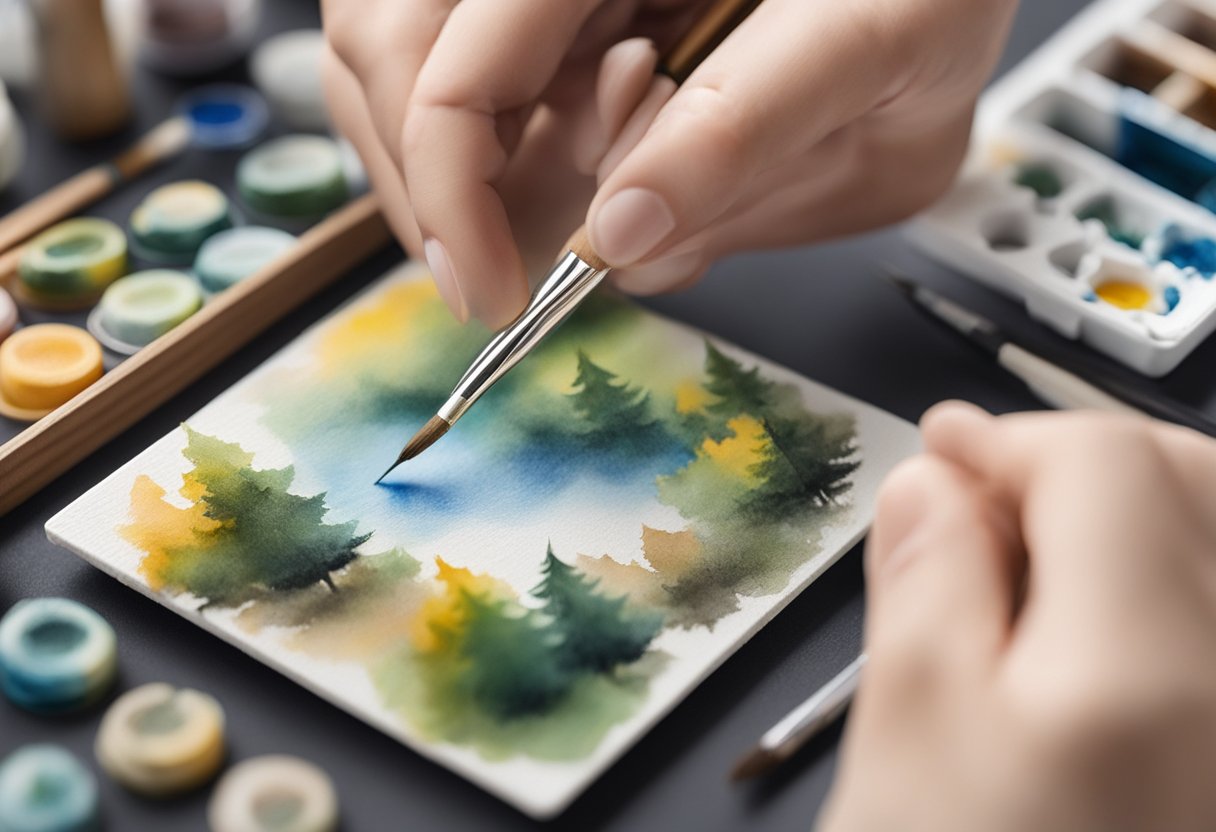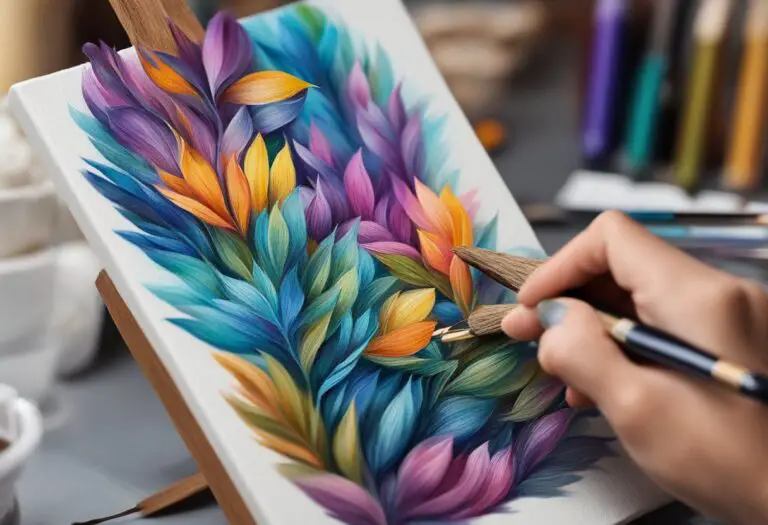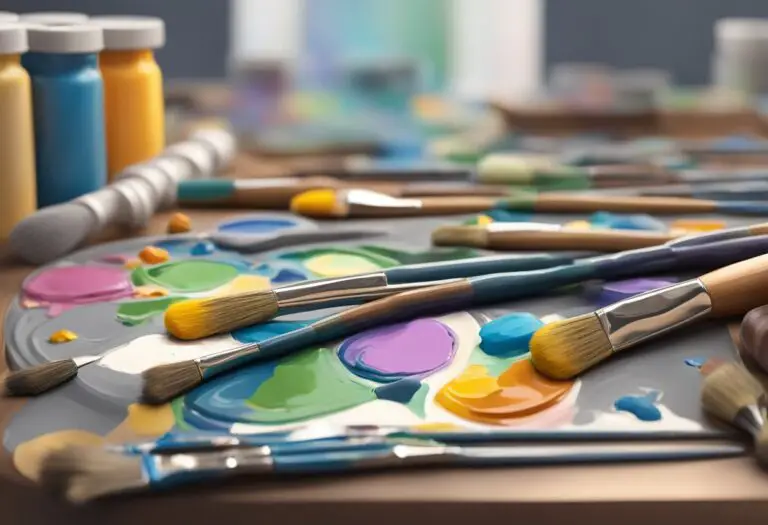Mastering Washes in Miniature Painting Techniques
Enhance the beauty of your miniature paintings with the art of washes. Miniature painting is a delicate and precise art form that requires attention to detail and mastery of various techniques. One technique that can greatly elevate your miniatures is the skillful use of washes.
Washes in miniature painting involve applying transparent layers of diluted paint to add depth, shadows, and highlights to your artwork. Understanding how to properly use washes can bring your miniatures to life, making them more realistic and visually stunning.
In this guide, we will explore the world of washes in miniature painting techniques. Whether you’re a beginner or an experienced artist, learning how to do washes will unlock a new level of creativity and artistry in your miniatures.
Discover expert techniques and learn how to apply washes effectively. From understanding the different types of washes available to providing a step-by-step guide on their application, this comprehensive guide will equip you with the knowledge and skills you need to create professional-looking miniature paintings.
Start experimenting with washes in miniature painting techniques today and witness the transformation of your miniatures into captivating works of art.
Understanding Washes for Miniature Painting
Before diving into the techniques, it’s essential to understand the fundamentals of washes in miniature painting. Washes are a versatile technique that can add depth and enhance the details of your miniatures. They are thin, transparent layers of diluted paint that flow into the recesses of your models, emphasizing shadows and creating a realistic effect.
There are different types of washes available for miniature painting. Let’s explore some of the most commonly used ones:
Ink Washes
Ink washes are highly pigmented, and they create intense color when applied to the miniature’s surface. They are great for creating bold, striking effects and can be used to emulate stains, dirt, or weathering on your models.
Acrylic Washes
Acrylic washes are popular among miniature painters because of their versatility. They come in a wide range of colors and can be easily diluted with water to achieve the desired transparency. Acrylic washes are perfect for shading and creating subtle color variations on your miniatures.
Oil Washes
Oil washes are known for their slow drying time, which gives you more control over the blending and shading process. They are used effectively for realistic weathering effects and creating smooth transitions between different colors on your models.
Regardless of the type of wash you choose, they all serve the same purpose – to enhance the details of your miniatures. They effortlessly settle into the recesses, such as armor plates, clothing folds, and facial features, to create shadows and depth.
By using washes in your miniature painting, you can achieve stunning results with minimal effort. They are an essential tool in any painter’s arsenal and can be used in combination with other techniques to bring life to your miniatures.
Step-by-Step Guide to Applying Washes

Applying washes is an essential technique in miniature painting, allowing artists to enhance the details and create depth in their artwork. Follow this step-by-step guide to learn how to apply washes to your miniatures effectively and achieve stunning results.
Step 1: Prepare Your Materials
Before you begin, gather the necessary materials for applying washes to your miniatures:
- A suitable wash paint – choose a wash paint that complements the color scheme of your miniature
- A brush for applying washes – a small, fine-point brush works best for detailed work
- A palette or mixing tray to dilute the wash paint
- Water – for diluting the wash paint to achieve the desired consistency
- Paper towels or a paint rag – for cleaning your brush and managing excess wash
Step 2: Dilute the Wash Paint
Take a small amount of wash paint from the container and place it onto your palette or mixing tray. Add a few drops of water to the paint and mix it well. The consistency of the wash should be thin enough to flow easily into the recesses and crevices of your miniature.
Step 3: Apply the Wash
Using your fine-point brush, dip it into the diluted wash paint. Gently tap the brush on the edge of the palette to remove excess paint. Begin applying the wash to the miniature by starting at the highest point and allowing the wash to flow naturally into the recesses and crevices.
Focus on one area at a time, ensuring an even application of the wash. Use the brush to guide the flow of the wash and avoid pooling or smudging. Take your time and work carefully to achieve the desired effect.
Step 4: Remove Excess Wash
Once you have applied the wash to the entire miniature or a specific area, use a clean brush or a paper towel to remove any excess wash. Lightly blot the areas where the wash may have pooled or accumulated, ensuring a smooth and controlled application.
Step 5: Allow the Wash to Dry
After applying the wash and removing any excess, allow the miniature to dry completely. This is important as the wash will continue to settle and darken as it dries, enhancing the depth and shading of your artwork.
Step 6: Evaluate and Adjust
Once the wash has dried, evaluate the effect and impact it has on your miniature. If desired, you can repeat the process by applying additional layers of wash to intensify or adjust the overall look.
Remember, practice makes perfect, and experimenting with washes will help you develop your skills and find the techniques that work best for your style of miniature painting.
Recommended Wash Paints for Miniature Painting
| Brand | Color | Recommended Use |
|---|---|---|
| Army Painter | Strong Tone | Enhancing details and shading |
| Citadel | Nuln Oil | Adding depth and shadow effects |
| Scale75 | Inktensity Black | Creating contrast and dramatic effects |
| Secret Weapon | Sepia | Adding warmth and antiquing effects |
These are just a few recommendations among the many wash paints available. Explore different brands and colors to find the ones that suit your preferences and achieve the desired effects in your miniature painting.
Choosing the Best Washes for Miniatures
When it comes to miniature painting, selecting the best washes can make all the difference in achieving stunning results. With a wide range of brands and types available, it can be overwhelming to determine which ones will work best for your specific painting techniques.
Expert-Recommended Brands
Experts in the field of miniature painting highly recommend the following brands for their exceptional quality and results:
- Army Painter: Known for their strong pigment concentration and excellent flow properties, Army Painter washes are a top choice among many miniature painters. They offer a comprehensive range of colors, allowing for precise shading and highlighting.
- Citadel: Citadel washes are renowned for their consistency and versatility. With a vast selection of colors, they provide excellent coverage and control. These washes are widely used by professional painters and hobbyists alike.
- Vallejo: Vallejo offers a wide variety of washes that provide exceptional transparency and flow. They are known for their high-quality pigments, ensuring vibrant and consistent results. Vallejo washes are often favored for their ease of use and ability to enhance the fine details of miniatures.
Types of Washes
Understanding the different types of washes available can help you choose the best one for your desired effect:
- Ink Washes: Ink washes are highly transparent and flow smoothly over the miniature’s surface. They are ideal for creating subtle shading and enhancing fine details.
- Acrylic Washes: Acrylic washes are water-based and provide a wide range of color options. They can be easily thinned and manipulated to achieve the desired consistency and coverage.
- Oil Washes: Oil washes are known for their slow drying time, allowing for greater control during application. They are often used for creating realistic weathering effects and tonal variation in miniature painting.
Experimenting with different brands and types of washes will help you find the perfect combination that suits your painting style and desired effects. Whether you are creating vibrant fantasy miniatures or realistic historical figures, choosing the best washes will ensure your artwork stands out with depth and dimension.
Conclusion
Mastering washes in miniature painting techniques can transform your miniatures into captivating works of art. By utilizing washes, you can enhance the details and bring depth to your artwork, creating visually stunning pieces that command attention.
Throughout this guide, you’ve learned the fundamentals of washes, explored different types, and discovered step-by-step techniques for their application. Armed with this knowledge, you can now confidently experiment with washes to unlock the true potential of your miniature artwork.
Whether you’re a seasoned painter or just starting on your miniature painting journey, incorporating washes into your repertoire will undoubtedly elevate your skills to new heights. With practice and patience, you’ll be able to achieve professional-looking results that showcase your artistic vision.
So don’t hesitate to dive in, explore the world of washes, and let your creativity flow. Embrace this versatile painting technique, and watch as your miniatures come alive with depth, detail, and a touch of artistic magic.







